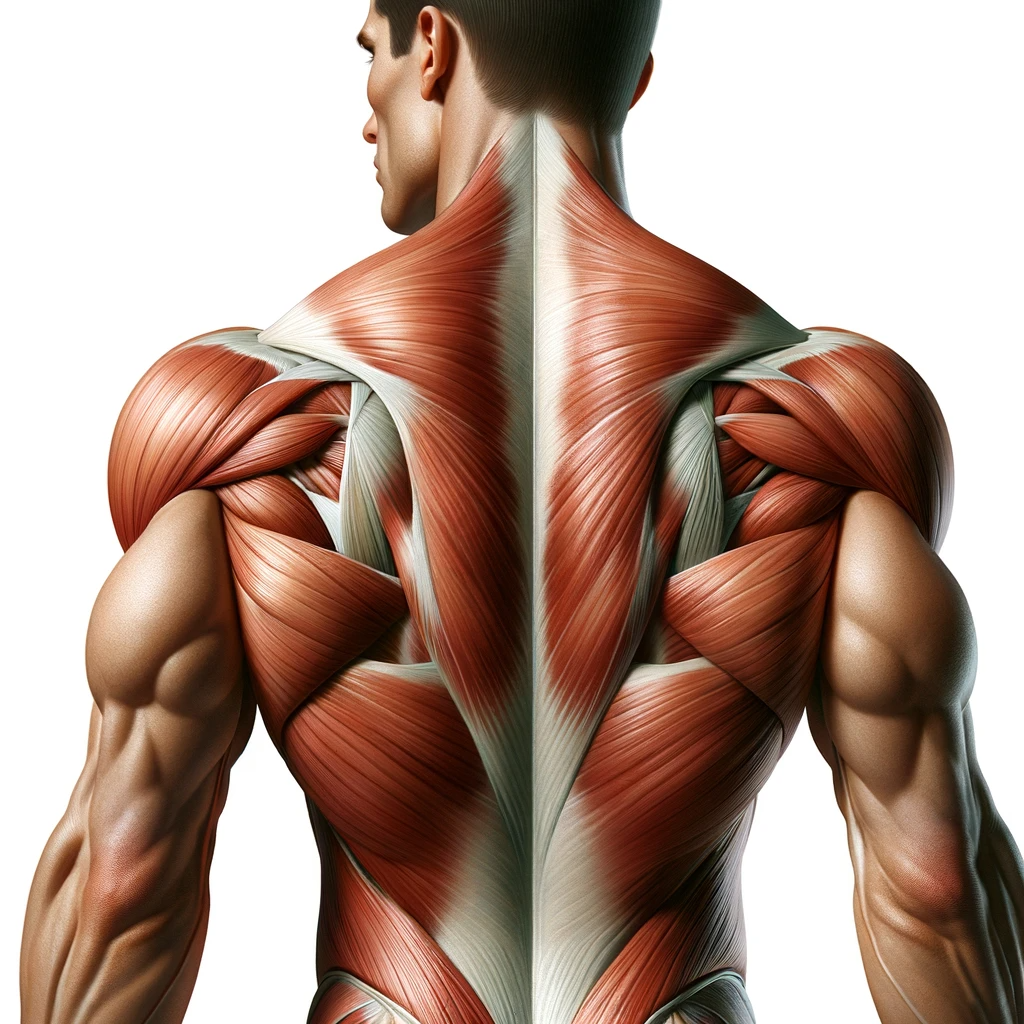Exploring the Amazing Trapezius
The Trapezius is a superficial muscle located in the upper region of the back with connecting points to the skull, shoulders, and vertebral column. It is primarily responsible for movements in the shoulder and neck and is crucial in various sports and competitions. The trapezius muscle is divided into three parts: the upper (superior) trapezius, the middle (transverse) trapezius, and the lower (inferior) trapezius.
Function
- Upper Trapezius: Elevates and upwardly rotates the scapula. It also helps in neck extension and lateral flexion.
- Middle Trapezius: Retracts the scapula (brings it toward the spine). It also assists in scapular stabilization.
- Lower Trapezius: Depresses and upwardly rotates the scapula. It is essential for scapular stability and proper positioning during shoulder movements.
Functional Aspects in Athletics:
Understanding the function of the trapezius muscle is vital for athletes across various sports. Here are some key athletic considerations:
Posture and Stability:
- A well-conditioned trapezius muscle contributes to maintaining proper posture, especially in sports that demand a stable and upright torso, such as weightlifting or golf.
Shoulder Function:
- Athletes involved in overhead activities, such as swimmers, baseball pitchers, or volleyball players, rely heavily on the trapezius to facilitate smooth and coordinated movement of the shoulder girdle.
Injury Prevention:
- Strengthening all parts of the trapezius helps prevent imbalances that could lead to injuries, particularly in the shoulder and neck regions.
Performance Optimization:
- Training programs targeting the trapezius improve overall upper body strength and power, enhancing an athlete’s ability to generate force during various athletic movements.

Like all muscles, a combination of lengthening and strengthening is needed to train the traps effectively. This muscle group especially causes a lot of problems when tight and weak such as stiffness in the back, neck pain, shoulder pain, and poor posture to mention a few.
For this reason, the 3 levels of the trapezius should be targeted not only in compound movements but also in isolation movements. The lower traps come to mind as they are usually the weaker of the bunch, especially in weightlifters and explosive athletes when compared with the upper traps which are not unusually tight and stiff.
This leads to a variety of imbalances, performance, and posture issues. My 3 other posts detail exactly how to bulletproof every level of trapezius individually to neutralize those imbalances and effectively bulletproof this important muscle.

